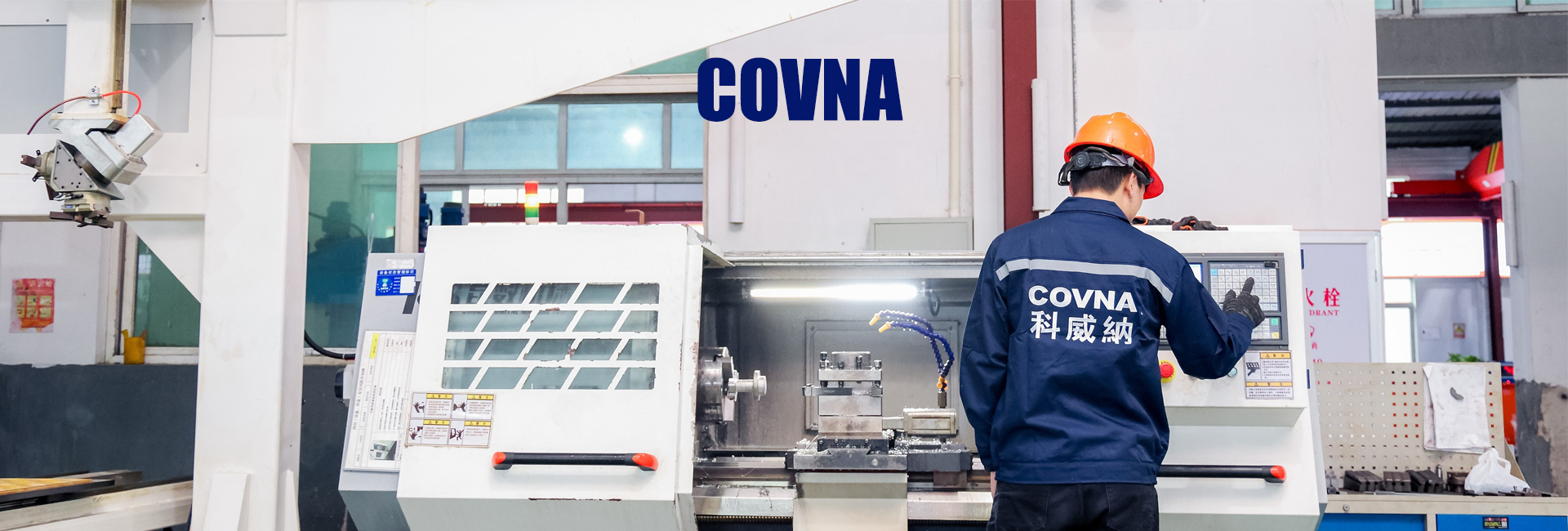Is comhpháirteanna riachtanacha iad na comhlaí i dtáirgeadh tionsclaíoch agus sa saol laethúil, a úsáidtear go príomha chun an treo sreafa a rialú agus toirt na sreabhán a rialáil. Mar sin féin, is minic a bhíonn meirge nó creimeadh mar thoradh ar nochtadh fada do thaise, do na meáin cheimiceacha, nó do thimpeallachtaí creimneacha eile, rud a théann i bhfeidhm ar a bhfeidhmiúlacht agus a d'fhéadfadh teipeanna trealaimh a chruthú. Mar sin, cad is cúis le comhlaí meirge, agus conas is féidir linn é a chosc? Leagtar amach sa treoir seo modhanna éagsúla chun creimeadh comhla a chosc go mion.
I. Cúiseanna meirge comhla
1. Saincheisteanna ábhartha
Is iondúil go ndéantar comhlaí as ábhair mhiotalacha mar iarann teilgthe, cruach charbóin, nó cruach dhosmálta. Tá friotaíocht creimthe lag ag roinnt cruach íseal-charbóin nó gnáth-chomhlaí iarainn theilgthe, rud a fhágann go mbíonn siad i dtimpeallachtaí tais nó aigéadacha/alcaileacha.
2. Timpeallacht oibre chrua
Tá comhlaí a nochtar do aer tais nó timpeallachtaí ina bhfuil salainn, aigéid, nó alcaileacha an -so -ghabhálach d'imoibrithe ocsaídiúcháin.
3. Cothabháil neamhleor
Gan glanadh agus cothabháil rialta, is féidir le taise, le heisíontais, nó le substaintí creimneacha ar dhromchlaí comhla dlús a chur le foirmiú meirge.
4. Cosaint dromchla neamhleor
Mura bhfuil cóireálacha cosanta éifeachtacha ag dromchla an chomhla mar phéint frith-chreimthe nó ola-chruthach meirge, is féidir le teagmháil dhíreach le substaintí creimneacha a bheith mar thoradh ar theagmháil dhíreach le substaintí creimneacha.
Ii. Modhanna cuimsitheacha frith-chreimthe le haghaidh comhlaí
1. Roghnaigh ábhair oiriúnacha
Is é roghnú ábhar atá frithsheasmhach in aghaidh creimthe bunaithe ar an timpeallacht úsáide an chéad chéim chun meirge a chosc.
- Comhlaí cruach dhosmálta:Oiriúnach do choinníollacha aigéadacha, alcaileach, nó an -tais.
- Comhlaí cóimhiotail:Tá cóimhiotail nicil-bhunaithe nó tíotáiniam oiriúnach do thimpeallachtaí ardteochta agus an-chreimneach.
- Comhlaí plaisteacha nó líneáilte:Éifeachtach le haghaidh aigéid láidre, alcaileacha láidre, agus meáin speisialta eile.
- Comhlaí iarainn theilgthe:Tá sé an-fhrithsheasmhach in aghaidh creimthe, atá oiriúnach do choinníollacha ard-chaitheamh agus an-chreimneach.
2. Cosaint sciath dromchla
Is modh coiteann é bratuithe cosanta a chur i bhfeidhm ar dhromchlaí comhla chun an mhiotal a leithlisiú ó mheáin chreimneacha seachtracha.
- Péint Frith-Creimthe:Tá bratuithe spraeála cosúil le eapocsa nó polúireatán chun ciseal cosanta dlúth a chruthú.
- Cótaí spraeála teirmeacha:Cuir sraith de mhiotail atá frithsheasmhach in aghaidh creimthe i bhfeidhm mar since nó alúmanam ag baint úsáide as teicnící spraeála plasma nó lasair.
- Leictreaphlátáil nó plating ceimiceach:Feabhsaíonn teicnící cosúil le since, nicil, nó plating cróimiam friotaíocht ocsaídiúcháin dromchla.
- Líneáil le rubar nó plaisteach:Clúdaigh na dromchlaí inmheánacha le hábhair rubair nó plaisteacha chun na meáin chreimneacha a láimhseáil.
3. Cosaint Chathóidigh
Suiteáil anóidí íobartacha (m.sh., maignéisiam nó sinc) nó cuir sruthanna seachtracha i bhfeidhm chun an corp comhla a dhéanamh mar chatóid, ag cosc creimthe. Úsáidtear an modh seo go coitianta le haghaidh comhlaí faoi thalamh nó faoi uisce.
4.
Cuir ola, céir creimthe, nó coscairí creimthe speisialaithe i bhfeidhm go rialta chun scannán cosanta a dhéanamh, go háirithe i gcás comhlaí nach bhfuil in úsáid go gníomhach.
5. Cothabháil agus glanadh rialta
- Bain eisíontais, táirgí salachar, nó creimthe (m.sh. meirge) ón dromchla.
- Cinntigh go bhfanann an dromchla tirim chun nochtadh fada do thaise a sheachaint.
- Scrúdaigh rónta agus pointí nasctha go rialta chun sceitheadh a d'fhéadfadh a bheith ina gcúis le creimeadh a chosc.
6. Feabhsuithe ar Dhearadh Struchtúrach
Dearaí comhla a bharrfheabhsú chun rioscaí creimthe i dtimpeallachtaí sonracha a laghdú.
- Cuir clúdaigh chosanta nó rónta chun gáis nó leachtanna creimneacha seachtracha a leithlisiú.
- Feabhas a chur ar dhearaí cosáin sreafa chun coinneáil sreabhach a íoslaghdú agus creimeadh logánta a chosc.
7. Próisis Cóireála Speisialta
- Cóireáil éighníomhach:Próiseáil leachtach níocháin aigéadach nó passivation chun scannán ocsaíd cosanta dlúth a chruthú ar an dromchla miotail.
- Nítrídeach nó cróimiú:Modhanna cóireála teasa a insíonn eilimintí atá frithsheasmhach in aghaidh creimthe isteach sa dromchla miotail chun marthanacht a fheabhsú.
8. Úsáid rónta oiriúnacha
Tá roghnú ábhar róin ríthábhachtach chun cosc a chur ar chreimeadh. Roghnaigh ábhair atá frithsheasmhach in aghaidh creimthe mar PTFE (polytetrafluoroethylene) nó fluoroelastomers bunaithe ar airíonna na meán.
9. Cótaí a ndearnadh damáiste dóibh a dheisiú
Má dhéantar damáiste nó scamhadh do chótaí cosanta, déan iad a dheisiú go pras ag baint úsáide as spraeáil ar an láthair nó ag scuabadh le péint frith-chreimthe chun limistéir a bhfuil tionchar orthu a chlúdach.
Iii. Bearta Frith-Creimthe do Chásanna Speisialta
1. Timpeallachtaí Mara
I dtimpeallachtaí mara spraeála salainn, bain úsáid as ábhair chruach dhosmálta in éineacht le bratuithe atá níos tiubha salann agus le feistí cosanta catóide.
2. Coinníollacha ardteochta agus ardbhrú
Cuireann teochtaí arda dlús le creimeadh. Roghnaigh ábhair chóimhiotail atá frithsheasmhach in ardteocht agus cuir cótaí ceirmeacha nó scannáin chosanta ocsaíd i bhfeidhm.
3. Comhlaí faoi thalamh nó adhlactha
Tá comhlaí faoi thalamh i mbaol taise agus ceimiceáin san ithir. Tá bearta frith-chreimthe cuimsitheacha, amhail bratuithe seachtracha agus cosaint chatóide, riachtanach.
Iv. Láimhseáil comhlaí rusted
Má tá na comhlaí rusted cheana féin, tóg bearta cuí bunaithe ar an déine:
- Meirge éadrom:Go héadrom gaineamh nó scuabadh as an meirge, ansin cuir ola-cruthúnas meirge nó péint frith-chreimthe i bhfeidhm.
- Rust measartha:Bain úsáid as réitigh níocháin aigéid le haghaidh baint meirge ceimiceach, agus cóireálacha frith-chreimthe ina dhiaidh sin.
- Meirge dian:Má chuireann an meirge isteach ar fheidhmiúlacht, smaoinigh ar na comhpháirteanna nó ar an gcomhla iomlán a athsholáthar.
V. Conclúid
Éilíonn cóireáil frith-chreimthe comhla cur chuige iomlánaíoch atá curtha in oiriúint do thimpeallachtaí éagsúla agus do choinníollacha creimthe. Ó roghnú ábhair agus cosaint dromchla go cothabháil rialta agus ardteicnící próiseála, tá ról ríthábhachtach ag gach céim maidir le saolré comhla a leathnú. Is féidir le straitéisí éifeachtacha frith-chreimthe cosc a chur ar chaillteanais eacnamaíocha agus rioscaí sábháilteachta a bhaineann le meirge, ag cinntiú oibriú cobhsaí agus fadtéarmach an trealaimh.
Am Post: Samhain-19-2024




